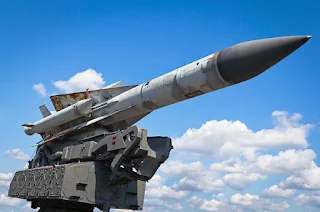The Cold War, a decades-long period of geopolitical tension and competition between the United States and the Soviet Union, was a defining feature of international relations in the mid-20th century. This era of ideological rivalry, which lasted from the end of World War II until the collapse of the Soviet Union in 1991, was marked by a complex interplay of diplomatic maneuvering, proxy wars, and propaganda campaigns.
In this blog post, we will delve into the strategies employed by the United States and the Soviet Union during the Cold War, with a particular focus on proxy wars and diplomatic maneuvers. We will explore the historical context of the Cold War, examine the key events and conflicts that shaped the era, and analyze the implications of the Cold War for modern international relations.
Origins of the Cold War
The Cold War had its roots in the aftermath of World War II. As the Allies began to demobilize and rebuild, tensions arose between the United States and the Soviet Union over issues such as post-war reorganization, economic aid, and the spread of communism.
The Soviet Union, led by Joseph Stalin, sought to expand its influence in Eastern Europe and promote the spread of communism worldwide. In contrast, the United States, led by President Harry Truman, was committed to containing the spread of communism and promoting democratic values.
The Truman Doctrine, announced in 1947, marked a significant turning point in the Cold War. The doctrine committed the United States to providing economic and military aid to countries threatened by communism, and it established the framework for U.S. foreign policy during the Cold War.
Proxy Wars
One of the defining features of the Cold War was the use of proxy wars. Both the United States and the Soviet Union employed proxy forces to fight wars on their behalf, often in distant regions of the world.
The Korean War (1950-1953) was a classic example of a proxy war. After North Korean forces, backed by China and the Soviet Union, invaded South Korea, the United States led a coalition of United Nations forces to defend the South.
The Vietnam War (1959-1975) was another notable example of a proxy war. The United States provided military and economic aid to the government of South Vietnam, while the Soviet Union and China supported the communist forces of North Vietnam.
The Soviet Union also employed proxy forces in Africa, particularly in Angola and Mozambique. The United States responded by supporting anti-communist forces in these regions.
Diplomatic Maneuvers
Diplomacy played a crucial role in the Cold War, as both the United States and the Soviet Union sought to gain advantage through negotiation and compromise.
The Geneva Summit of 1955, which brought together the leaders of the United States, the Soviet Union, France, and the United Kingdom, marked a significant moment in Cold War diplomacy. The summit established the principle of "peaceful coexistence" between the communist and capitalist blocs.
The Cuban Missile Crisis of 1962 brought the world to the brink of nuclear war. After discovering Soviet missile sites in Cuba, President John F. Kennedy imposed a naval quarantine on the island, leading to a tense standoff with Soviet Premier Nikita Khrushchev.
The crisis was eventually resolved through a combination of diplomatic maneuvering and compromise. The Soviet Union agreed to dismantle its missile sites in Cuba, while the United States promised not to invade the island.
Detente and the End of the Cold War
The 1970s saw a period of detente, or relaxation, in the Cold War. The United States and the Soviet Union negotiated several key agreements, including the Strategic Arms Limitation Talks (SALT) and the Helsinki Accords.
However, the Soviet invasion of Afghanistan in 1979 marked a significant turning point in the Cold War. The invasion led to a renewed period of tension between the United States and the Soviet Union, and it ultimately contributed to the collapse of the Soviet Union in 1991.
The collapse of the Soviet Union marked the end of the Cold War. The United States emerged as the world's sole superpower, and a new era of international relations began.
The Cold War was a complex and multifaceted conflict that shaped the course of modern history. Through a combination of proxy wars, diplomatic maneuvering, and propaganda campaigns, the United States and the Soviet Union vied for influence and supremacy on the world stage.
As we reflect on the Cold War, we are reminded of the importance of diplomacy, compromise, and cooperation in preventing conflict and promoting peace. The Cold War may be over, but its legacy continues to shape our world today.
Recommendations for Further Reading
1. John Lewis Gaddis, "The Cold War: A New History" (2005)
2. Walter LaFeber, "America, Russia, and the Cold War, 1945-2006" (2008)
3. Tony Judt, "Postwar"




